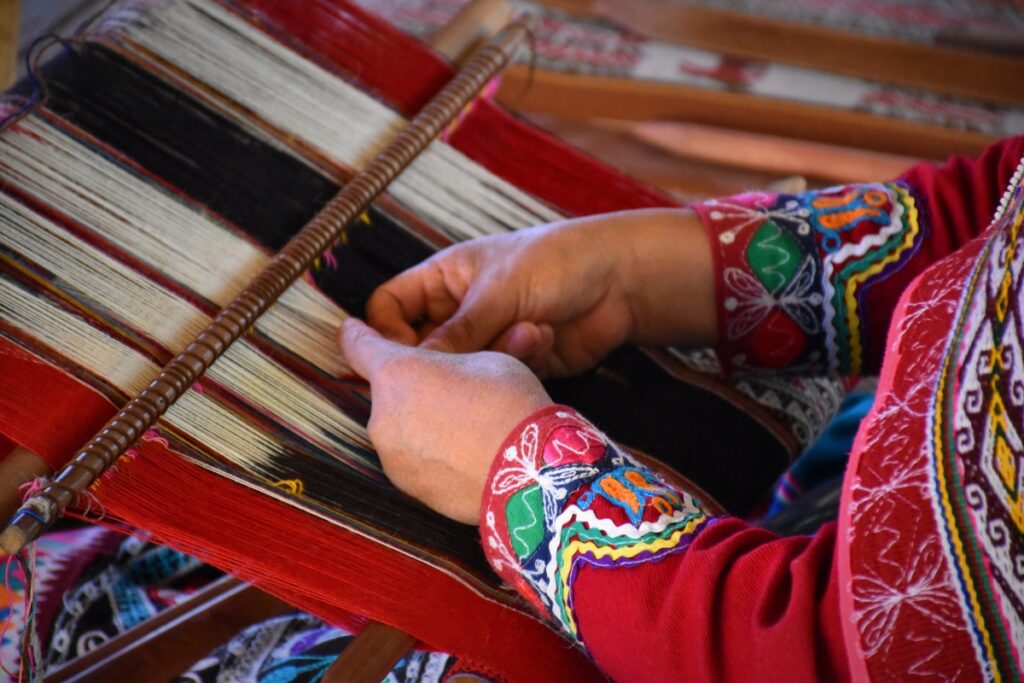Every rug lover has multiple choices. One can love traditional rugs, another one loves modern styles, and some are in love with Persian and oriental rugs. But, only a few of them care about the material and process. Only a palm-full of people know how to make a rug or how it is processed. If one who doesn’t care is reading this, he might ignore “why is it important to know how a rug is made?” and just enough if we can buy it from the shop. If you don’t mind, it is better to know the hidden story of everything you like than just observing and taking decisions. So go through this article, learn how to make a rug, and think about the next story when choosing a carpet.
Rug manufacturing methods
Rug-making started a long time ago. If you refer to our previous blog on the history of rugs, you can get an obvious idea. However, there are four different methods of constructing rugs so far. Let me introduce them to you.
How do you think this started? No doubts. You will answer hands. Yes. Handmade rugs were the first and the foundation for the rug industry in the world. So, the very first method of rug making is hand-knotting.
Hand-Knotting
This old technology has been used for over 1000 years. These rugs, made famous by Turkish and Persian artisans, are woven into sheer fabrics. The rugs are made by knotting the yarn crosswise (threads on the carpet vertically) and tightly wrapped around a wooden or metal frame (loom).
The Knotting process is prolonged and requires years of training and experience. The average weaver can knit about 10,000 knots a day. The leading carpet makers are artists in the true sense of the word, and their work should be treated the same way.
Hand Tufted
This technique uses a tufting gun that speeds up the rug-making process. This makes it easier to create hand-tufted rugs than other handmade or slow-moving techniques. On the other hand, manufacturers can quickly produce the highest quality hand-tufted rugs compared to other handmade methods.
This technology was developed as an alternative to hand rugs which greatly accelerates the production of rugs. First, the design is stencilled into a piece of canvas that is tightly stretched across a frame. Then, using a tufting gun, the thread is sent across the canvas into a ‘V’ shape. Once the tufting is done, the rug is removed from the frame and glued to the back to hide the tufting end. They are cheaper than their hand-tied cousins due to less labour and skill requirements.
Machine Made
In modern times, machine making has spread throughout the industry and is perhaps the most accessible of the rug-making techniques. Machines capable of weaving, weaving, hooks and tufting can produce handmade mattresses in a short period of time.
The fastest and most efficient method of making rugs using the latest machinery and technology, machine-made rugs are built through thousands of reels fed into one giant mechanical loom that can be quickly carpeted to the selected pattern. Although there are limits to the amount of color used on one rug (usually 8-10 colors), several rugs can be made at once. Machine-made rugs are affordable and of high quality and service, making them an affordable luxury item in your home.
Flat Weaving/Hand Weaving
Produces rugs without the need for the fabric to build a flat weave. These are the pattern and foundation of a carpet, and since they have no backing, you can use either side when you lay them down. Classifying them as flat results from their lack of piles and smooth texture, which also contributes to their durability. Automatic loom machines can create a variety of intricate patterns with precision through the application of computer-aided design technology. The machines minimize the possible defects in the carpet as a result.
For this technique, you will need a sewing machine. Built on a two-layer structure of vertical threads, the rugmaker places a horizontal weave between the upper and lower battle plates. The canopy has a movable front part called a beater, which pulls the fabric maker towards the growing carpet to press each extra line of the weft. This way, no large blanks could damage the fabric’s integrity once it is finished.
If the professional changes the process slightly, the flat canopy may have a more stacked surface. The yarn is piled up by placing a tube or rod between the two looms. The rug makers then made alternate rods and weaved them on the rug, and once they were finished, they could be left alone, or the loops could be cut.

